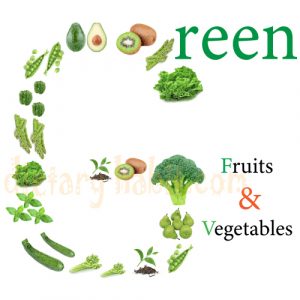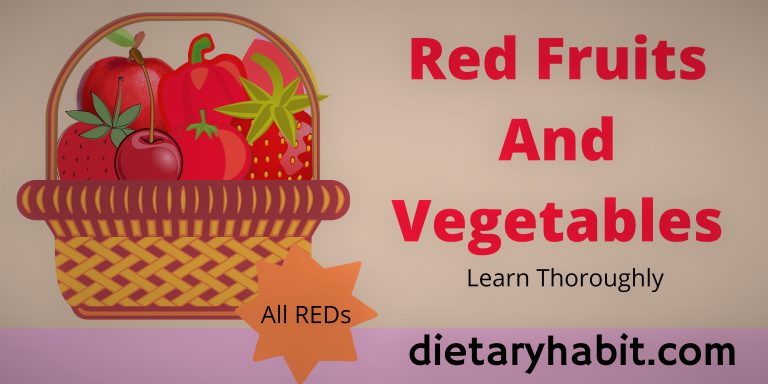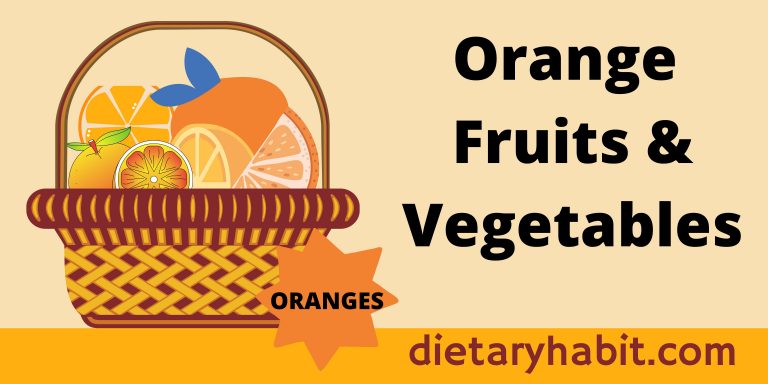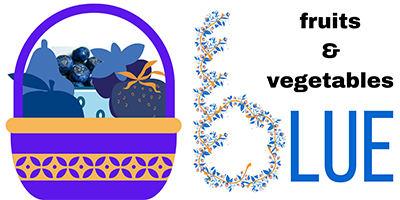The Healthiest Green Fruits and Vegetables For A Healthier Diet

Green means freshness and prosperity. Green symbolizes balance. Adding more greens to your meal plate can help you achieve a more balanced diet. The more green you add to your meal, the more natural and sophisticated it becomes. The most plentiful fruits and vegetables are maybe in the green coating. Green fruits and vegetables are lustrous on the table combining delightful taste and unmatched nutrition profile.
Related Posts: Exotic Pink Fruits with Amazing Nutrition Profile
Phytochemicals Found In Green Fruits & Vegetables
Green fruits and veggies have abundant nutrition that incorporates most of the essential nutrients our bodies need. They are rich in phylloquinone or vitamin K. Green foods have the potential to promote heart health. The phytochemicals in green fruits and vegetables include highly abundant potassium, phosphorus, naturally occurring nitrates, folates, antioxidants like vitamin E, vitamin C, etc.
Green leafy vegetables offer more nutrients than green fruits and root vegetables. Doctors suggest eating green fruits and vegetables every day as they are rich sources of dietary fibers- both soluble and non-soluble. They comprise proteins and little to no fat. If you build a habit of eating greens, the jam-packed nutrients will hoist your energy level high.
Harvest Season for Green Fruits and Vegetables
Eating green fruits and vegetables at the right time in the right way can produce the best results. If you eat them in season, you’ll get the most nutrition and the best taste of fresh fruit or vegetable. In the off-season, green fruits and vegetables are expensive to buy and don’t yield any better but worse.
Green fruits and veggies reach their peak production period and popularity once a year. It’s autumn when fields are covered in greens. In the winter season, local shops and markets are flooded with green fruits and vegetables. Sometimes, it seems that Winter has a synonym, and that is green fruits and veggies. You can see an astounding diversity when the fall arrives.
However, the market is scarce in the off-season, and the preservation process decreases the quality of green foods. People tend to enjoy them in the season, furnishing plates in greens full to the brim. Harvest season may vary slightly in different regions of the US.
Benefits of eating green fruits and vegetables
Green fruits and vegetables can be grossly classified into green leafy vegetables, cruciferous vegetables, and green colored fruits. They are hugely produced that there’s, of course, an item for anyone to choose.
Green leafy vegetables are rich in naturally occurring nitrates. Researchers studied the effects of nitrate-rich foods and found them highly effective against heart diseases. As available with a rich nutrition profile, you can try green fruits and vegetables from now on. Green fruits and vegetables contain varying phytochemicals, including carotenoids and flavonoids, high in density. Carotenoids are very effective against night blindness. Alpha and beta carotenes also improve vision.
Consuming green plant-based foods can slow the rate of age-related macular degeneration and the onset of blindness. Here a carotenoid compound named lutein plays a significant role. An observational study suggests that the inflammatory effects of lutein not only prevent blindness but also reduce the risk of chronic clinical conditions.
Cruciferous vegetables are mostly edible members from the brassica family, including cabbage, cauliflower, broccoli, etc. They contain indoles that fight against cancer. Green vegetables are widely known as cancer-protective foods. However, recent researches also presented a more uncommon aspect of the cabbage family on health. Cruciferous green vegetables contain organosulfur compounds that help to run the cardiovascular system effectively. So consuming more and more cabbage vegetables, you can be immune yourself at its best.
Potassium content is amazingly high in green fruits and vegetables. It’s an essential indicator of a healthy heart. Potassium helps in blood coagulation and maintains proper bones and vascular metabolism. Potassium should be considered in your diet through green fruits and vegetables.
Green fruits and veggies include antioxidants like vitamin E, vitamin C, etc. Vitamin E is abundant and yields the highest antioxidant efficacies. If your cells are under abnormal oxidative assault, the antioxidant function of vitamin E can come in handy. You may find tons of health benefits of vitamin E in green fruits and vegetables in bounty.
A Harvard publication suggests that green fruits and vegetables fight against chronic diseases, e.g., cancer, cardiovascular diseases, diabetes, hypertension, obesity, gastrointestinal health, vision, etc. The dietary fibers support many other functions, including cholesterol control, constipation prevention, and so on.
To sum up, the key takeaways from the health benefits are summarized below-
- Combat chronic diseases e.g. hypertension, diabetes, cancer, etc.
- Cabbage family can also protect you from cardiovascular diseases
- Carotenes in green fruits and green vegetables promote vision
- Green fruits and vegetables contain dietary fibers which is an essential component of balanced diet
- Potassium helps in blood clotting. Eating green fruits and vegetables reduce clotting time.
What fruits, vegetables are green
Asparagus
This shoot vegetable looks attractive on the table for its unusual shape. It’ll provide you with necessary nutrients, including vitamins like folate. Folate is essential to continue the production of hemoglobin in the blood.
Avocado
You can use avocado in your daily salad. Just a slight tweak to open its core as it’s straightforward to prepare avocado food. Avocado is one of the few green fruits and vegetables that contains fat. Of course, it’s the excellent omega fat that you need to produce essential fatty acids.
Basil
A part of basil can play the twist in making delicious as well as healthy food. In Asia and Africa, basil is a flavorful leafy vegetable enriched with manganese, iron, vitamins, and omega-3 fatty acid. It protects you from high blood sugar, cholesterol, infection in joints, etc.
Broccoli
Broccoli is one of the green vegetables we’re frequently told to eat. The edible flowering green part attracts you the same as the others from the cabbage family. Broccoli is said to be very effective against cancer and heart disease. Broccoli also boosts overall immunity by maintaining hormonal balance.
Courgettes
Courgette or zucchini are the same vegetables, just the words derived from two different languages, Italian and French. It’s eaten in immature form when it’s soft and edible. The naturally fat-free courgette offers space when you intend to lower your calories intake.
Celery
Celery is one of the most ancient plant-based food that’s eaten almost all over the world. This green vegetable is packed with many nutrients, including vitamins like folate and minerals like potassium. Its low glycemic index is helpful for healthy bowel as it has a steady effect on the glucose level.
Green Peas
Green pea is a popular food and quite nutritious. The number of antioxidants and dietary fibers is enough to fight a battle to defeat chronic illnesses. If you want to switch to plant-based proteins, the green pea is an excellent option. Green peas easily satiate your appetite; hence need fewer calories.
Kiwi fruit
This sweet little green fruit offers plenty of nutrients and lots of flavors. Eating three kiwis a day is more effective than an apple a day to reduce high blood pressure. Themicromineralss and macrominerals boost your immunity. It also maintains digestive health, eye health, and more.
Green pears
Green pear is an ancient bell-shaped fruit that’s harvested all over the world. Green pear is an excellent source of copper, potassium, folate, antioxidants like polyphenols, and vitamin C. Maintaining a habit of eating green pears promotes digestive health. It also protects against cancer and other chronic diseases.
Green tea
Green tea is one of the most hyped beverages known to be healthier than others. It improves neuron functioning, battles cancer, and enhances cognitive power. It’s more than a hydrating beverage because it comes with antioxidant activities that boost the immune system. It also helps if you’re planning to lose little fat in a short period.
Green Bell peppers
Green bell peppers are just unripe peppers harvested before turning into yellow, red, or purple. They are less sweet and taste bitter. But this green fruit (technically) is packed with necessary minerals and nutrition. The dietary fibers in it improve gut health. Green peppers may promote eye and heart health.
Lettuce
Lettuce is the green leafy vegetable widely used as the base of the salad. The boatload of nutrients includes minerals like potassium, vitamins, and more. 95% of lettuce is water that hydrates your body efficiently. It also strengthens the bones and stabilizes the joints.
Last Words
To maintain a sustainable healthy diet, you need to manage your diet plan smartly. Green fruits and vegetables are abundant in seasons, and everybody seems to love these delicious foods. I, myself, wait for some of my favorite green vegetables in this season. But there are also plenty of other colorful fruits and vegetables in the Winter.
You should try these rainbow fruits and vegetables as they also contain some highly beneficial aspects. Pink fruits can be a great option to boost your health. You can also switch between red, yellow, orange, and even white fruits and vegetables to bring variety to the table.






